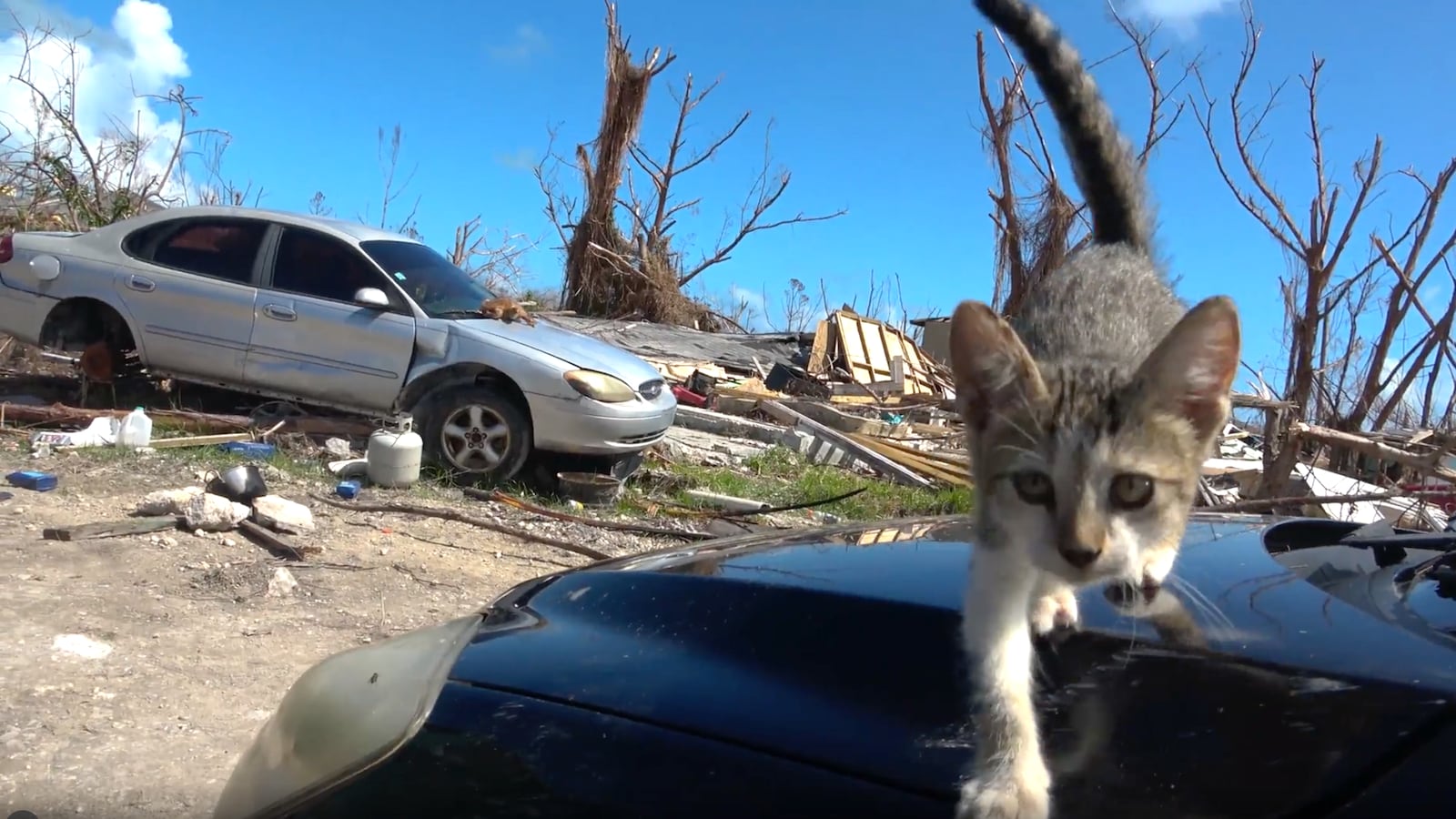Near the end of 2019, the world was watching as the Camp Fire continued to ravage parts of Northern California. It had sparked in early November, and eventually burned more than 153,000 acres, destroyed nearly 20,000 structures, and resulted in the deaths of 85 people, making it the deadliest and most destructive fire in the state’s history. The town of Paradise was reduced to ashes.
Firefighters were battling the fast-spreading blaze and entire communities faced an evacuation order. In fact, at several points, the fire was moving so fast that firefighters abandoned efforts to prevent the flames from entering a town and instead focused on getting people get out alive.
To call those first responders heroes is an understatement. More than 85 firefighters were injured—and thank goodness none died. Of course, there were other heroes on the ground too, including my friend Shannon Jay. And what I saw that day changed the direction of my life.
I was there in Northern California filming the wildfires and the devastation. I’d been a seaplane pilot and drone cinematographer for more than eight years—and an aerial cinematographer since 1992—filming TV shows, commercials, natural history documentaries and more recently, high-end real estate. But my true passion is the environment and animal activism.

Doug Thron operating his drone
CuriosityStreamAs a kid, I raised orphaned baby animals; as an adult, I was moved deeply by the cause to save the ancient redwoods and spent most of the ’90s photographing the beauty as well as the destruction of these magnificent trees from logging. I also did countless aerial flights over the logged and unlogged areas showing reporters, politicians, Hollywood actors, and others what was at stake. My photographs proved instrumental in helping get 7,000 acres of ancient redwood forest protected. It’s now known as the Headwaters Forest Reserve.
A year before the Camp Fire, I was in Santa Rosa, California, using my drone to film the devastation. Fire zones often look like warzones. It was haunting. Miles and miles of a town looked like it had been bombed out. But, amid the destruction, I saw a lone mail truck following its route, delivering mail to the completely burned-down houses. That moment was a real awakening for me—a sign that climate change is very real and that we are in trouble if we don’t make drastic changes.
Nothing is ever easy in the wake of wildfire devastation like that—or after a hurricane or any type of natural disaster. There’s often no power, no cell service, and very few public services. People have had to evacuate their homes at a moment’s notice, leaving all their precious belongings behind. In that frantic process, beloved pets are often left or stranded. No one chooses that, but it happens. A lot. And then there are the wild animals, too, who lose their habitat and can’t find food or water for days. What happens to them?
I started thinking about this while I was helping my friend Shannon Jay at the Paradise Camp Fire. He’s a longtime expert cat rescuer, and I saw him using an infrared scope at night to help find the cats. We talked about how incredible it would be to put an infrared camera on a drone. Fast-forward about 10 months later, and the Category 5 Hurricane Dorian slammed into the Bahamas. I was already there, volunteering in the relief effort on the Sea Shepherd aid ship, and had the chance to test out my drone, rigged with the infrared camera, like Shannon had used on the ground in California. With the sheer scale of the destruction, stranded animals were difficult to see. But the camera detected an animal’s body heat, and I found out quickly just how well it worked.
My first big rescue using the drone was there in the Bahamas almost two weeks after Dorian hit. I spotted a dog roaming around the mountains of debris. He clearly hadn’t had any water or much food for days. He was really apprehensive at first, but warmed up over the course of the day, as I just sat with him. Dog food and water helped! The next day, some animal rescuers came with me to get him. He’s such an incredible dog, and meant so much to me, so I adopted him and named him Duke.
There always seems to be a natural disaster ravaging some part of the world. The potential for drones to help rescue animals in those situations, whether wild or domestic, and help in their recovery is unlimited. After several months in the Bahamas, I headed to Australia, where catastrophic bushfires were ravaging many parts of the country and several endangered species were close to being driven to extinction.
I spent seven months there, using the infrared drone to locate and rescue dozens of koalas and other exotic wildlife trapped in the massive burn zone. From there, I went back to California, just an hour north of my home in Oakland, to help in the devastation during the LNU Lightning Complex fires. After that, Hurricane Laura tore up the Louisiana coast. There was the Alameda fire in Oregon and the aftermath of Hurricane Maria in Puerto Rico.
Along the way, I connected with film crews from CuriosityStream and Lone Wolf Media, and the idea for a new docuseries, Doug to the Rescue, was born. Environmental activism and animal rescue work is my passion; I’m helping anywhere I can, regardless of the cameras following along. But the series is a great way to show people how effective infrared drones can be in saving animals’ lives.
In every location, I was in awe of the teams of animal rescuers and volunteers who put everything aside to help. Aja Nikiya Esto is one of those people. I first met Aja in the Bahamas after hurricane Dorian. Her team from Compassion Kind was there helping in the relief efforts. I’ve never met anyone like her who can work with animals in literally any situation. Animals who are stranded in a natural disaster are usually scared, and often a scared animal can be an aggressive one, understandably. Aja has a way with them—a calming presence. In a matter of minutes, a skittish pup would be lying on its back ready for a belly rub. It’s Aja’s gift. And thank goodness she was there with me for those first rescues in the Bahamas.

Duke stranded in the Bahamas before he was rescued by Doug
CuriosityStreamFor me, it’s incredible to be able to help rescue these animals so much faster and more efficiently with the drone, and, in many cases, I’m finding animals that might never have been found. In places like Louisiana, where I was searching in neighborhood after neighborhood, it gives you a feeling of hope when you find a cat or dog, knowing it was someone’s pet. It might be the only thing they have left after a fire or hurricane.
But it’s different everywhere I go—and finding animals when there aren’t any others alive nearby is always hard. In Australia, I’d be covering a dozen or so miles a night, only finding an occasional animal. It’s quite sad, because you realize how many thousands of animals didn’t make it. It’s also tough to see how fires and other natural disasters as a result of climate change are eradicating the last vestiges of unentered habitat and endangered animals.
My hope is that these infrared drones will be as common for rescuing animals in the wake of a natural disaster as helicopters are for rescuing people. Many more animals can be saved when you can locate them so much faster than on foot.
The emotion when victims of a tragedy get their animals back is incredibly moving. It gives people a sense of hope to carry on after something so devastating. I’m enormously grateful to be a part of that.
Check out ‘Doug to the Rescue’ on CuriosityStream

